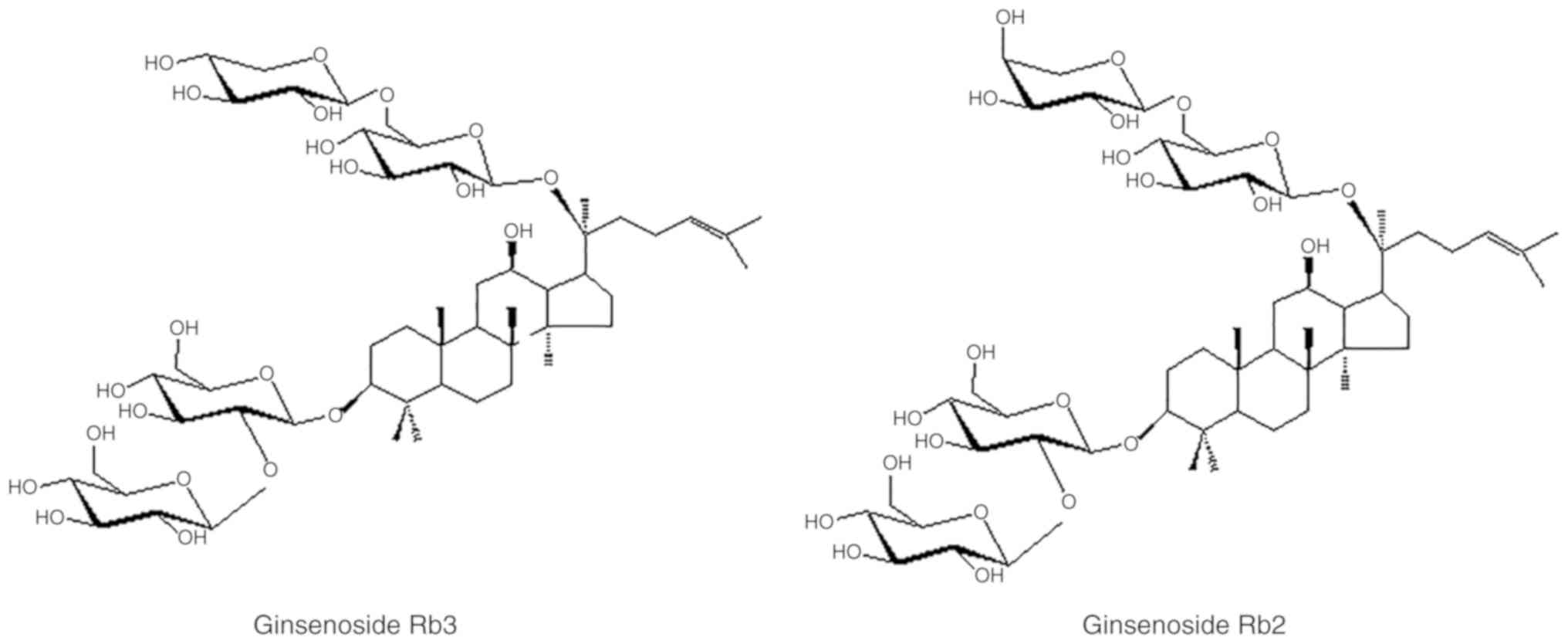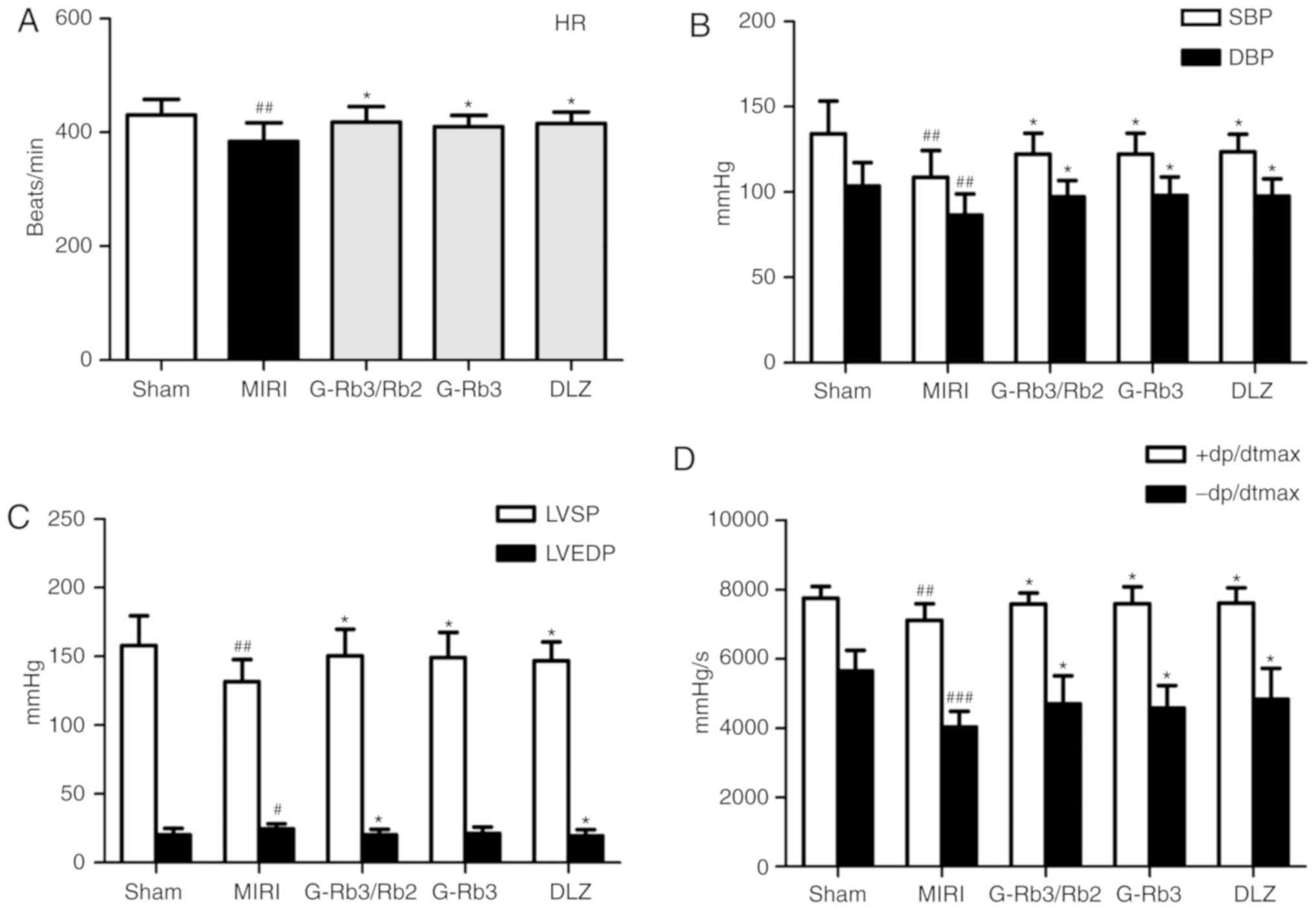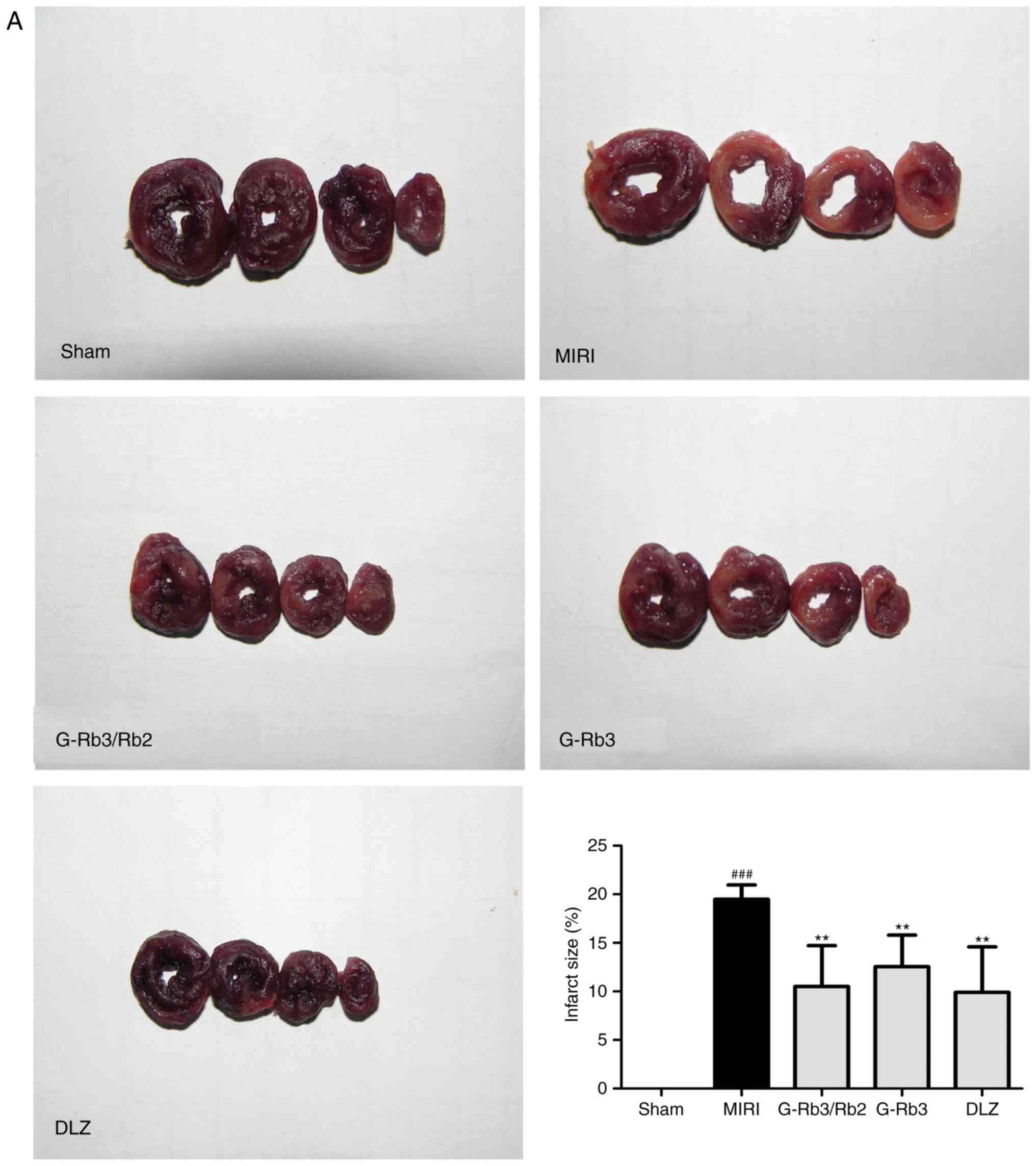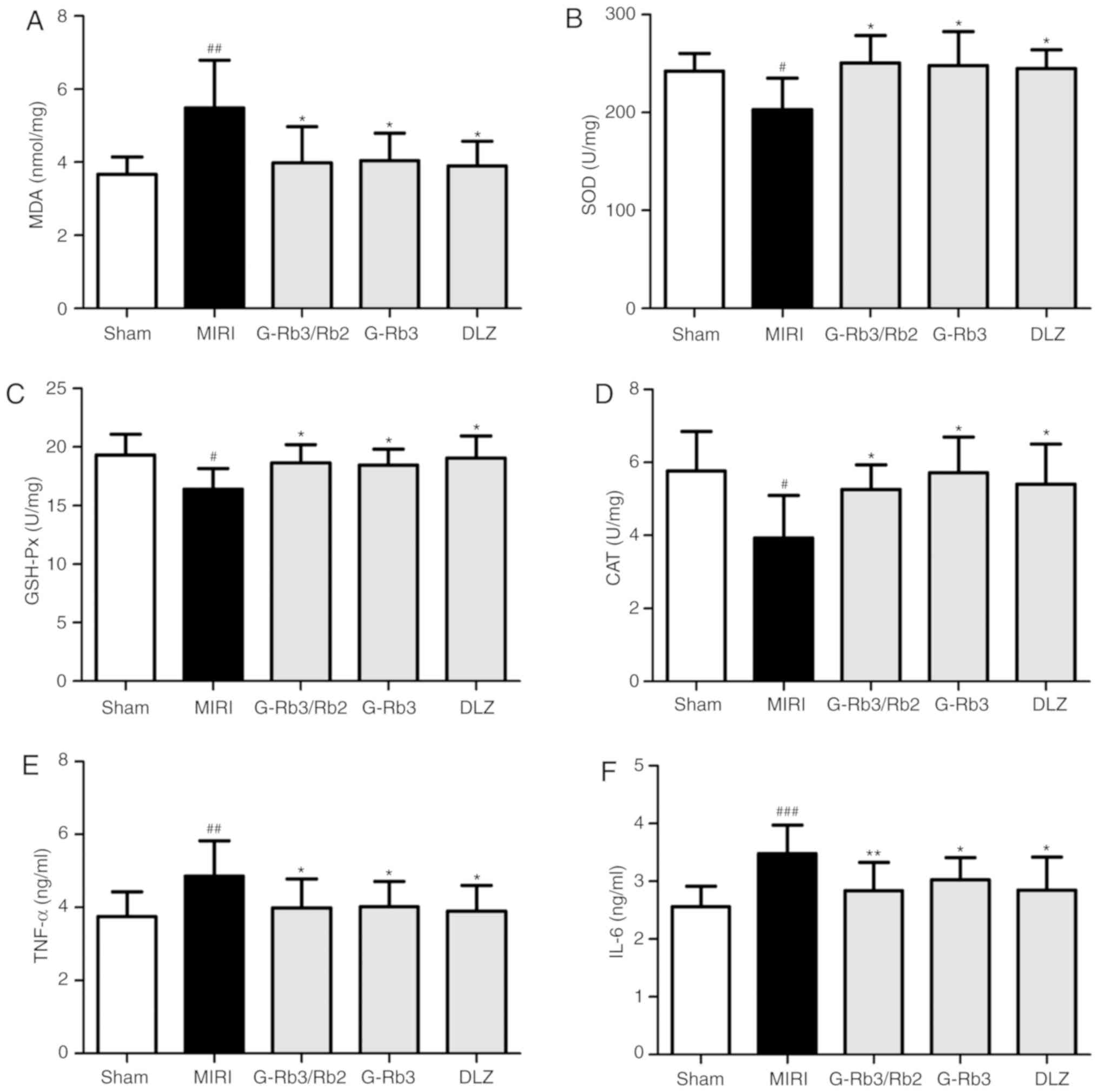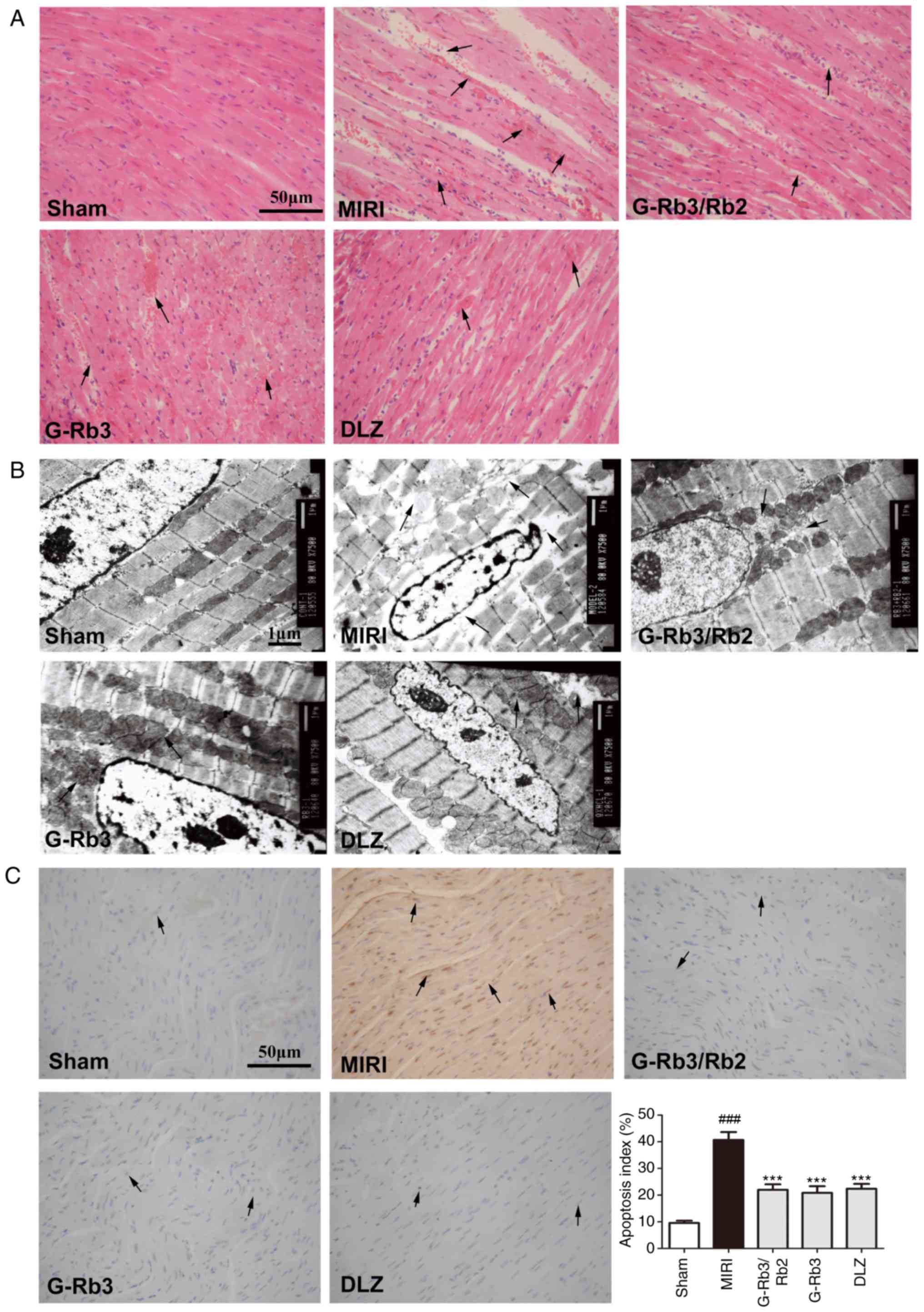|
1
|
Karimi M, Zare H, Bakhshian Nik A, Yazdani
N, Hamrang M, Mohamed E, Sahandi Zangabad P, Moosavi Basri SM,
Bakhtiari L and Hamblin MR: Nanotechnology in diagnosis and
treatment of coronary artery disease. Nanomedicine (Lond).
11:513–530. 2016. View
Article : Google Scholar
|
|
2
|
Krokhaleva Y and Vaseghi M: Update on
prevention and treatment of sudden cardiac arrest. Trends
Cardiovasc Med. 29:394–400. 2019. View Article : Google Scholar
|
|
3
|
Zhou H, Ma Q, Zhu P, Ren J, Reiter RJ and
Chen Y: Protective role of melatonin in cardiac
ischemia-reperfusion injury: From pathogenesis to targeted therapy.
J Pineal Res. 64:2018. View Article : Google Scholar : PubMed/NCBI
|
|
4
|
Rude RE, Muller JE and Braunwald E:
Efforts to limit the size of myocardial infarcts. Ann Intern Med.
95:736–761. 1981. View Article : Google Scholar : PubMed/NCBI
|
|
5
|
Hausenloy DJ and Yellon DM: Myocardial
ischemia-reperfusion injury: A neglected therapeutic target. J Clin
Invest. 123:92–100. 2013. View
Article : Google Scholar : PubMed/NCBI
|
|
6
|
Nesher N, Zisman E, Wolf T, Sharony R,
Bolotin G, David M, Uretzky G and Pizov R: Strict thermoregulation
attenuates myocardial injury during coronary artery bypass graft
surgery as reflected by reduced levels of cardiac-specific troponin
I. Anesth Analg. 96:328–335, table of contents. 2003.PubMed/NCBI
|
|
7
|
Jo MS, Lee J, Kim SY, Kwon HJ, Lee HK,
Park DJ and Kim Y: Comparison between creatine kinase MB,
heart-type fatty acid-binding protein, and cardiac troponin T for
detecting myocardial ischemic injury after cardiac surgery. Clin
Chim Acta. 488:174–178. 2019. View Article : Google Scholar
|
|
8
|
Virmani R, Forman MB and Kolodgie FD:
Myocardial reperfusion injury. Histopathological effects of
perfluorochemical. Circulation. 81(3 Suppl): IV57–IV68.
1990.PubMed/NCBI
|
|
9
|
Hou H, Wang Y, Li Q, Li Z, Teng Y, Li J,
Wang X, Chen J and Huang N: The role of RIP3 in cardiomyocyte
necrosis induced by mitochondrial damage of myocardial
ischemia-reperfusion. Acta Biochim Biophys Sin (Shanghai).
50:1131–1140. 2018.
|
|
10
|
Ibáñez B, Heusch G, Ovize M and Van de
Werf F: Evolving therapies for myocardial ischemia/reperfusion
injury. J Am Coll Cardiol. 65:1454–1471. 2015. View Article : Google Scholar : PubMed/NCBI
|
|
11
|
Yu L, Zhang W, Huang C, Liang Q, Bao H,
Gong Z, Xu M, Wang Z, Wen M and Cheng X: FoxO4 promotes myocardial
ischemia-reperfusion injury: The role of oxidative stress-induced
apoptosis. Am J Transl Res. 10:2890–2900. 2018.PubMed/NCBI
|
|
12
|
Davidson SM, Ferdinandy P, Andreadou I,
Bøtker HE, Heusch G, Ibáñez B, Ovize M, Schulz R, Yellon DM,
Hausenloy DJ, et al: Multitarget strategies to reduce myocardial
ischemia/reperfusion injury: JACC review topic of the week. J Am
Coll Cardiol. 73:89–99. 2019. View Article : Google Scholar : PubMed/NCBI
|
|
13
|
Gottlieb RA, Burleson KO, Kloner RA,
Babior BM and Engler RL: Reperfusion injury induces apoptosis in
rabbit cardiomyocytes. J Clin Invest. 94:1621–1628. 1994.
View Article : Google Scholar : PubMed/NCBI
|
|
14
|
Liu S, Ai Q, Feng K, Li Y and Liu X: The
cardioprotective effect of dihydromyricetin prevents
ischemia-reperfusion-induced apoptosis in vivo and in vitro via the
PI3K/Akt and HIF-1α signaling pathways. Apoptosis. 21:1366–1385.
2016. View Article : Google Scholar : PubMed/NCBI
|
|
15
|
Shu Z, Yang Y, Yang L, Jiang H, Yu X and
Wang Y: Cardioprotective effects of dihydroquercetin against
ischemia reperfusion injury by inhibiting oxidative stress and
endoplasmic reticulum stress-induced apoptosis via the PI3K/Akt
pathway. Food Funct. 10:203–215. 2019. View Article : Google Scholar
|
|
16
|
Mokhtari-Zaer A, Marefati N, Atkin SL,
Butler AE and Sahebkar A: The protective role of curcumin in
myocardial ischemia-reperfusion injury. J Cell Physiol.
234:214–222. 2018. View Article : Google Scholar : PubMed/NCBI
|
|
17
|
Sun J, Yu X, Huangpu H and Yao F:
Ginsenoside Rb3 protects cardiomyocytes against
hypoxia/reoxygenation injury via activating the antioxidation
signaling pathway of PERK/Nrf2/HMOX1. Biomed Pharmacother.
109:254–261. 2019. View Article : Google Scholar
|
|
18
|
Liu K, Chen H, You QS, Ye Q, Wang F, Wang
S, Zhang SL, Yu KJ and Lu Q: Curcumin attenuates myocardial
ischemia-reperfusion injury. Oncotarget. 8:112051–112059. 2017.
View Article : Google Scholar
|
|
19
|
Wang CZ, Wu JA, McEntee E and Yuan CS:
Saponins composition in American ginseng leaf and berry assayed by
high-performance liquid chromatography. J Agric Food Chem.
54:2261–2266. 2006. View Article : Google Scholar : PubMed/NCBI
|
|
20
|
Kim JH: Pharmacological and medical
applications of Panax ginseng and ginsenosides: A review for use in
cardiovascular diseases. J Ginseng Res. 42:264–269. 2018.
View Article : Google Scholar : PubMed/NCBI
|
|
21
|
Bai L, Gao J, Wei F, Zhao J, Wang D and
Wei J: Therapeutic potential of ginsenosides as an adjuvant
treatment for diabetes. Front Pharmacol. 9:4232018. View Article : Google Scholar : PubMed/NCBI
|
|
22
|
Wan JB, Yang FQ, Li SP, Wang YT and Cui
XM: Chemical characteristics for different parts of Panax
notoginseng using pressurized liquid extraction and HPLC-ELSD. J
Pharm Biomed Anal. 41:1596–1601. 2006. View Article : Google Scholar : PubMed/NCBI
|
|
23
|
Liu X, Jiang Y, Yu X, Fu W, Zhang H and
Sui D: Ginsenoside-Rb3 protects the myocardium from
ischemia-reperfusion injury via the inhibition of apoptosis in
rats. Exp Ther Med. 8:1751–1756. 2014. View Article : Google Scholar : PubMed/NCBI
|
|
24
|
Jiang Y, Zhong GG, Chen L and Ma XY:
Influences of ginsenosides Rb1, Rb2, and Rb3 on electric and
contractile activities of normal and damaged cultured
myocardiocytes. Zhongguo Yao Li Xue Bao. 13:403–406.
1992.PubMed/NCBI
|
|
25
|
Sui DY, Chen YP, Yu XF, Wang ZC, Qu SC and
Ma XY: Application of composition containing ginsenoside-Rb3 and
ginsenoside-Rb2 to treatment of heart and cerebral vascular
diseases. CN2012104745480. filed. November 21–2012.
|
|
26
|
Moukarbel GV, Ayoub CM and Abchee AB:
Pharmacological therapy for myocardial reperfusion injury. Curr
Opin Pharmacol. 4:147–153. 2004. View Article : Google Scholar : PubMed/NCBI
|
|
27
|
Pizzetti G, Mailhac A, Li Volsi L, Di
Marco F, Lu C, Margonato A and Chierchia SL: Beneficial effects of
diltiazem during myocardial reperfusion: A randomized trial in
acute myocardial infarction. Ital Heart J. 2:757–765.
2001.PubMed/NCBI
|
|
28
|
Herzog WR, Vogel RA, Schlossberg ML,
Edenbaum LR, Scott HJ and Serebruany VL: Short-term low dose
intracoronary diltiazem administered at the onset of reperfusion
reduces myocardial infarct size. Int J Cardiol. 59:21–27. 1997.
View Article : Google Scholar : PubMed/NCBI
|
|
29
|
Chen C, Chen W, Nong Z, Ma Y, Qiu S and Wu
G: Cardioprotective effects of combined therapy with hyperbaric
oxygen and diltiazem pretreatment on myocardial
ischemia-reperfusion injury in rats. Cell Physiol Biochem.
38:2015–2029. 2016. View Article : Google Scholar : PubMed/NCBI
|
|
30
|
Shi Y, Han B, Yu X, Qu S and Sui D:
Ginsenoside Rb3 ameliorates myocardial ischemia-reperfusion injury
in rats. Pharm Biol. 49:900–906. 2011. View Article : Google Scholar : PubMed/NCBI
|
|
31
|
National Research Council (US) Committee
for the Update of the Guide for the Care and Use of Laboratory
Animals: Guide for the Care and Use of Laboratory Animals. 8th
edition. National Academies Press; Washington, DC: 2011
|
|
32
|
Cao Y, Li YK, Chen MQ and Yao KW: Research
progress on preparation of rat models of acute myocardial
infarction. Chin J Compat Med. 27:96–100. 2017.
|
|
33
|
Zhang H, Xu H, Xie H, Li F, Yu X and Sui
D: Cardiovascular protective effects of IL-1 ra-Fc-IL-18BP on
experimental myocardial infarction by inhibiting oxidative stress
and inflammation in a rat model. Pharmazie. 69:769–774. 2014.
|
|
34
|
Dai S, Hong Y, Xu J, Lin Y, Si Q and Gu X:
Ginsenoside Rb2 promotes glucose metabolism and attenuates fat
accumulation via AKT-dependent mechanisms. Biomed Pharmacother.
100:93–100. 2018. View Article : Google Scholar : PubMed/NCBI
|
|
35
|
Livak KJ and Schmittgen TD: Analysis of
relative gene expression data using real-time quantitative PCR and
the 2(-Delta Delta C(T)) method. Methods. 25:402–408. 2001.
View Article : Google Scholar
|
|
36
|
Maulik N, Yoshida T, Engelman RM, Deaton
D, Flack JE III, Rousou JA and Das DK: Ischemic preconditioning
attenuates apoptotic cell death associated with
ischemia/reperfusion. Mol Cell Biochem. 186:139–145. 1998.
View Article : Google Scholar : PubMed/NCBI
|
|
37
|
Animal Models of Human Diseases. EQ L:
People's Medical Publishing House; China: pp. p1132008
|
|
38
|
Zeller A, Arras M, Jurd R and Rudolph U:
Identification of a molecular target mediating the general
anesthetic actions of pentobarbital. Mol Pharmacol. 71:852–859.
2007. View Article : Google Scholar
|
|
39
|
Archer DP, Samanani N and Roth SH:
Small-dose pentobarbital enhances synaptic transmission in rat
hippocampus. Anesth Analg. 93:1521–1525, table of contents. 2001.
View Article : Google Scholar : PubMed/NCBI
|
|
40
|
Nassiri AA, Hakemi MS, Asadzadeh R, Faizei
AM, Alatab S, Miri R and Yaseri M: Differences in cardiovascular
disease risk factors associated with maximum and mean carotid
intima-media thickness among hemodialysis patients. Iran J Kidney
Dis. 6:203–208. 2012.PubMed/NCBI
|
|
41
|
Peng S, Wang Y, Zhou Y, Ma T, Wang Y, Li
J, Huang F, Kou J, Qi L, Liu B and Liu K: Rare ginsenosides
ameliorate lipid overload-induced myocardial insulin resistance via
modulating metabolic flexibility. Phytomedicine. 58:1527452019.
View Article : Google Scholar : PubMed/NCBI
|
|
42
|
Luo Y, Pan YZ, Zeng C, Li GL, Lei XM, Liu
Z and Zhou SF: Altered serum creatine kinase level and cardiac
function in ischemia-reperfusion injury during percutaneous
coronary intervention. Med Sci Monit. 17:CR474–CR479. 2011.
View Article : Google Scholar : PubMed/NCBI
|
|
43
|
Ryter SW, Kim HP, Hoetzel A, Park JW,
Nakahira K, Wang X and Choi AM: Mechanisms of cell death in
oxidative stress. Antioxid Redox Signal. 9:49–89. 2007. View Article : Google Scholar
|
|
44
|
Han SY, Li HX, Ma X, Zhang K, Ma ZZ and Tu
PF: Protective effects of purified safflower extract on myocardial
ischemia in vivo and in vitro. Phytomedicine. 16:694–702. 2009.
View Article : Google Scholar : PubMed/NCBI
|
|
45
|
Zhai KF, Duan H, Khan GJ, Xu H, Han FK,
Cao WG, Gao GZ, Shan LL and Wei ZJ: Salicin from Alangium Chinense
ameliorates rheumatoid arthritis by modulating the Nrf2-HO-1-ROS
pathways. J Agric Food Chem. 66:6073–6082. 2018. View Article : Google Scholar : PubMed/NCBI
|
|
46
|
Lyu M, Cui Y, Zhao T, Ning Z, Ren J, Jin
X, Fan G and Zhu Y: Tnfrsf12a-mediated atherosclerosis signaling
and inflammatory response as a common protection mechanism of
shuxuening injection against both myocardial and cerebral
ischemia-reperfusion injuries. Front Pharmacol. 9:3122018.
View Article : Google Scholar :
|
|
47
|
Zhai KF, Duan H, Luo L, Cao WG, Han FK,
Shan LL and Fang XM: Protective effects of paeonol on inflammatory
response in IL-1β-induced human fibroblast-like synoviocytes and
rheumatoid arthritis progression via modulating NF-κB pathway.
Inflammopharmacology. Aug 10–2017.Epub ahead of print. View Article : Google Scholar
|
|
48
|
Sun N, Wang H and Wang L: Protective
effects of ghrelin against oxidative stress, inducible nitric oxide
synthase and inflammation in a mouse model of myocardial
ischemia/reperfusion injury via the HMGB1 and TLR4/NF-κB pathway.
Mol Med Rep. 14:2764–2770. 2016. View Article : Google Scholar : PubMed/NCBI
|
|
49
|
Saraste A, Pulkki K, Kallajoki M,
Henriksen K, Parvinen M and Voipio-Pulkki LM: Apoptosis in human
acute myocardial infarction. Circulation. 95:320–323. 1997.
View Article : Google Scholar : PubMed/NCBI
|
|
50
|
Fliss H and Gattinger D: Apoptosis in
ischemic and reperfused rat myocardium. Circ Res. 79:949–956. 1996.
View Article : Google Scholar : PubMed/NCBI
|
|
51
|
Haunstetter A and Izumo S: Apoptosis:
Basic mechanisms and implications for cardiovascular disease. Circ
Res. 11:1111–1129. 1998. View Article : Google Scholar
|
|
52
|
Guo M, Chen K, Lv Z, Shao Y, Zhang W, Zhao
X and Li C: Bcl-2 mediates coelomocytes apoptosis by suppressing
cytochrome c release in Vibrio splendidus challenged Apostichopus
japonicus. Dev Comp Immunol. 103:1035332019. View Article : Google Scholar : PubMed/NCBI
|
|
53
|
Zhai KF, Duan H, Chen Y, Khan GJ, Cao WG,
Gao GZ, Shan LL and Wei ZJ: Apoptosis effects of imperatorin on
synoviocytes in rheumatoid arthritis through
mitochondrial/caspase-mediated pathways. Food Funct. 9:2070–2079.
2018. View Article : Google Scholar : PubMed/NCBI
|















